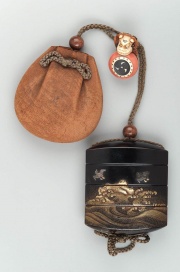Difference between revisions of "Aventurine"
| Line 1: | Line 1: | ||
| − | [[File:11.9947d-SC41084.jpg|thumb|]] | + | [[File:11.9947d-SC41084.jpg|thumb|Aventurine glass<br>MFA# 11.9947d]] |
== Description == | == Description == | ||
| Line 14: | Line 14: | ||
2. quartz; sunstone; Aventurin (Deut.) | 2. quartz; sunstone; Aventurin (Deut.) | ||
| + | ==Physical and Chemical Properties== | ||
{| class="wikitable" | {| class="wikitable" | ||
|- | |- | ||
| Line 27: | Line 28: | ||
[[media:download_file_459.pdf|Properties of Common Gemstones]] | [[media:download_file_459.pdf|Properties of Common Gemstones]] | ||
| − | + | == Resources and Citations == | |
| − | |||
| − | == | ||
* Jack Odgen, ''Jewellery of the Ancient World'', Rizzoli International Publications Inc., New York City, 1982 | * Jack Odgen, ''Jewellery of the Ancient World'', Rizzoli International Publications Inc., New York City, 1982 | ||
| Line 43: | Line 42: | ||
* Thomas B. Brill, ''Light Its Interaction with Art and Antiquities'', Plenum Press, New York City, 1980 | * Thomas B. Brill, ''Light Its Interaction with Art and Antiquities'', Plenum Press, New York City, 1980 | ||
| − | * Wikipedia | + | * Wikipedia: http://en.wikipedia.org/wiki/Aventurine (Accessed Sept. 14, 2005) |
* George Savage, ''Art and Antique Restorer's Handbook'', Rockliff Publishing Corp, London, 1954 | * George Savage, ''Art and Antique Restorer's Handbook'', Rockliff Publishing Corp, London, 1954 | ||
Revision as of 13:55, 23 August 2020
Description
1) A ceramic glaze or a glass that contains small colorant crystals or metallic particles. Aventurine glazes are prepared by adding infusible metallic particles (Copper or Chromic oxide) or by overloading iron or manganese oxide colorants to produce small flecks in the cooled, glassy film. Aventurine glass, sometimes called goldsotne, has a metallic or sparkly appearance. Some pieces were stained blue and called bluestone.
2) A Quartz mineral that contains shiny flecks of Mica that is also known as sunstone. Aventurine is usually green but can also be orange or reddish-brown. It is sometimes used as an inexpensive alternative to Jade. Most aventurine comes from Russia, India, and Brazil.
3. An imitation lacquer technique developed by the Martin brothers in Paris that incorporated rectangular pieces of inlaid brass wire in a green, black, or red synthetic lacquer finish (see also vernis martin).
Synonyms and Related Terms
1. aventurine glass; goldstone (imitation sunstone); bluestone (when stained blue)
2. quartz; sunstone; Aventurin (Deut.)
Physical and Chemical Properties
| Mohs Hardness | 2) 6.5 |
|---|---|
| Density | 2) 2.64-2.69 |
Comparisons
Properties of Common Gemstones
Resources and Citations
- Jack Odgen, Jewellery of the Ancient World, Rizzoli International Publications Inc., New York City, 1982
- G.S.Brady, Materials Handbook, McGraw-Hill Book Co., New York, 1971 Comment: p. 646
- Dictionary of Building Preservation, Ward Bucher, ed., John Wiley & Sons, Inc., New York City, 1996
- Henry Hodges, Artifacts: An Introduction to Early Materials and Technology, Ronald P. Frye, Kingston, Canada, 1988
- Robert Fournier, Illustrated Dictionary of Practical Pottery, Chilton Book Company, Radnor, PA, 1992
- Thomas B. Brill, Light Its Interaction with Art and Antiquities, Plenum Press, New York City, 1980
- Wikipedia: http://en.wikipedia.org/wiki/Aventurine (Accessed Sept. 14, 2005)
- George Savage, Art and Antique Restorer's Handbook, Rockliff Publishing Corp, London, 1954
- The American Heritage Dictionary or Encarta, via Microsoft Bookshelf 98, Microsoft Corp., 1998
